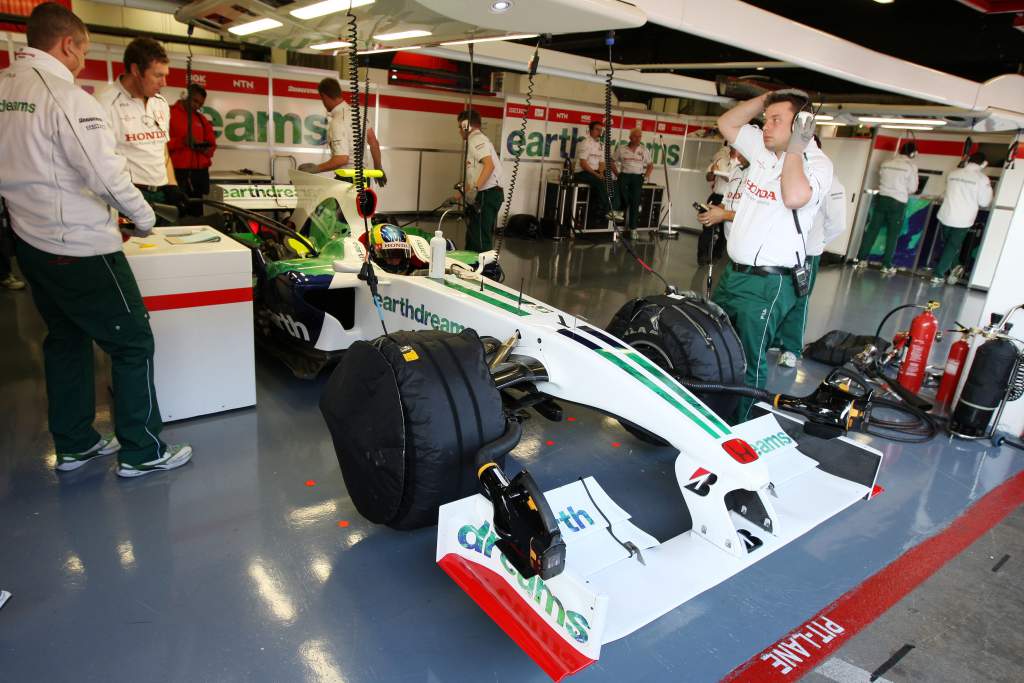Up Next

Honda’s impending exit from Formula 1 just as it appears to have given Red Bull an engine capable of fighting for a championship has prompted comparisons to Brawn GP’s 2009 success with something Honda designed, funded but never used itself.
The reality of Honda’s last F1 exit as a full works team, not just an engine supplier, is markedly different to the current one, though.
From the moment Honda decided to leave F1 at the end of 2021 it was clear that a continuation project for its engine would be possible with Red Bull. That was a silver lining in a decision mapped out much further in advance than the late-2008 call.
It is sad for Honda’s F1 people that they are losing their beloved programme, but it seems likely some personnel will stay on. And despite the usual Red Bull quit threats as it lobbied for an engine freeze to seal a Honda technology takeover deal, there was never a real threat that Honda’s decision put an entire team – whether that’s Red Bull, AlphaTauri or both – at risk.
Things were vastly different when Honda decided to leave F1 at the end of 2008, leaving Ross Brawn to spearhead a management buyout, save the F1 operation, and front an astonishing championship-winning effort that led to Mercedes taking the group over as its revived works team.
The only similarity is how much it surprised those at the heart of the project. Although even on that score, the 2008 withdrawal at the height of the global economic crisis has the modern-day version beat.

“We knew we were in quite big trouble because before even the discussion about Honda leaving, there was a lot of discussion about testing being cancelled,” says Mercedes’ chief trackside engineer Simon Cole, who was on Honda’s test team at the time, speaking on F1’s Beyond The Grid podcast as part of a ‘Team Brackley’ special.
“My thing was track testing every two weeks and I didn’t really get so involved in the racing. Ross called me to say there’s a discussion going on, because of the recession that everyone was experiencing, about cancelling the testing.
“Then when we started to see Honda having to commit to redundancies at [Honda’s automotive site in] Swindon, and around Europe, it was pretty clear that they couldn’t stomach the experience of paying for us at the same time as they were laying people off – quite rightly.”
The small group of team senior management were told on December 1 but had to keep that from staff until December 5, the same day the news would be made public.

“When we eventually told everybody, it was a big shock to the whole workforce,” says Ron Meadows, team manager then and now (above right).
“We realised we were underperforming. But normally with F1, you have a couple years of underperforming, then a couple of good years and a couple of bad years and you bounce around.
“Don’t forget that Honda only owned the company for [a few] years. They were with us for more, but they only owned it for [a few] years.”
Cole adds that Honda had been investing “very generously” so there was “no sign of this coming” in terms of any hesitancy: “They looked like they were in a long-term commitment.”
As an aside, it’s amusing that this has worked almost in reverse for the modern-day Honda F1 effort, which followed up its decision to leave with an expensive, extensive new engine project for 2021 and a commitment to develop that engine further on Red Bull’s behalf for the start of 2022 as well.

Honda’s choice in 2008 came not long after it had built a new windtunnel and was considering constructing an identical one in Japan.
“That was a state-of-the-art windtunnel that at the time was as good as anything that any other team had,” says Andrew Shovlin, trackside engineering director (above centre).
“As Simon says the money was flowing really freely right up until the point that they decided to stop.”
News of Honda pulling the plug was a stomach-churning development for the team at Brackley. Cole says that “probably 30% of the Brackley presence was Honda’s Japanese personnel – who “just vanished overnight” within 24 hours of the announcement. For those left, job security was at an all-time low.
Ross was very good. I can vividly remember this image in my mind now he was on the stairs in the Brackley race bays and just rallying up the troops, saying ‘we’re gonna fight for this’ :: James Vowles
But on the steps of the Honda race bays, Brawn attempted to rally the troops with a message of hope. They did not know how the team would be saved. But every effort would be made to save it. Against the backdrop of huge job uncertainty, staff members were being asked to put their faith in a massive unknown.
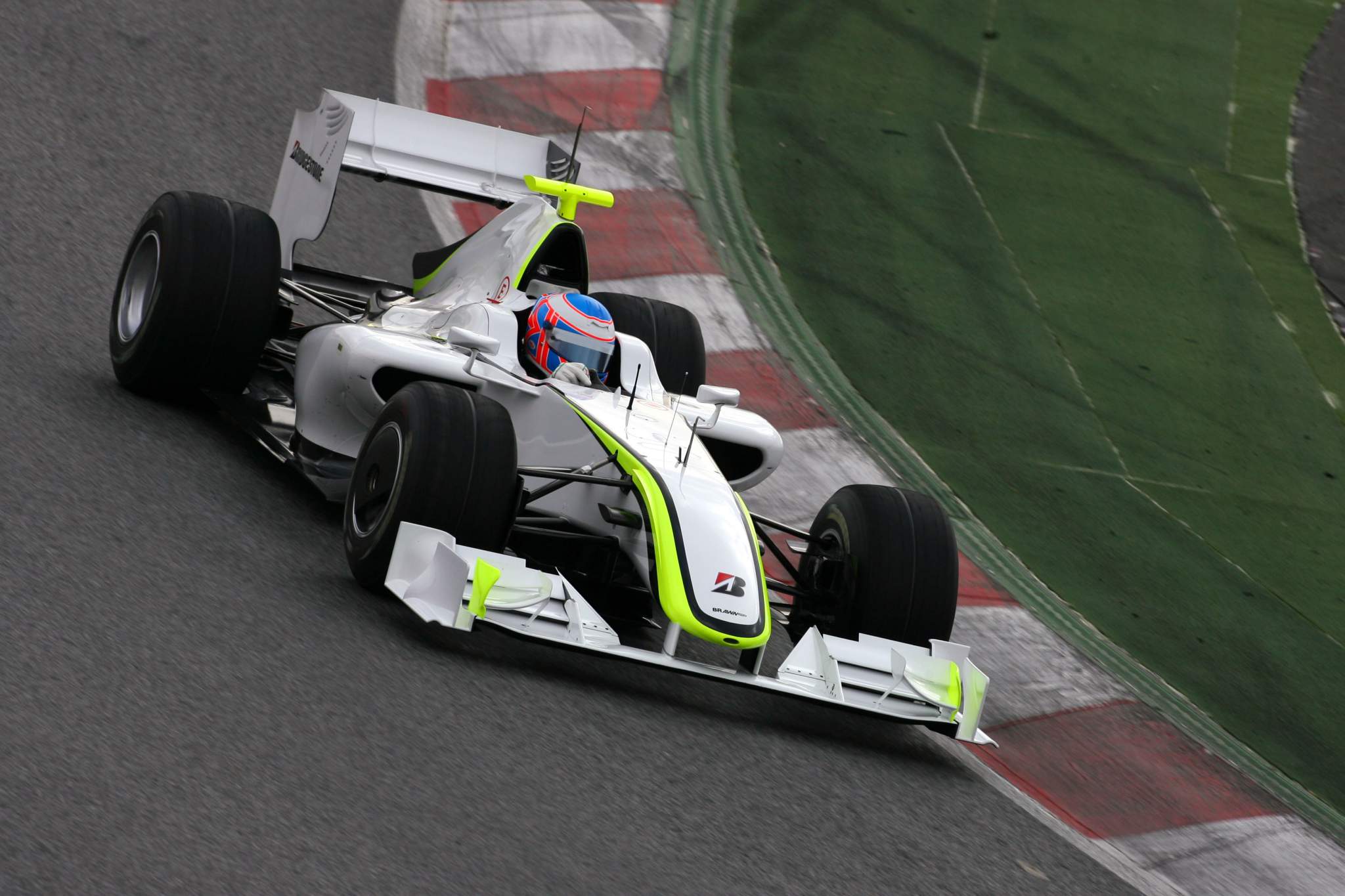
“The thing that impressed me the most is the entire workforce got their heads down and kept getting on with it without the knowledge of what was going to come through,” says James Vowles, Mercedes’ motorsport strategy director and the final member of the original Team Brackley quartet speaking on F1’s official podcast.
“Ross was very good. I can vividly remember this image in my mind now he was on the stairs in the Brackley race bays and just rallying up the troops, saying ‘we’re gonna fight for this’. And it was a moving moment whereby the entire workforce was clearly there to continue going racing and we would do what it takes to get ourselves back at the track.
“Now, many of us couldn’t actually control that individually. But it also meant that our hearts were set on trying to keep going with this team.
“It would have been wrong to not see if other opportunities came your way but I think the actual amount of people that left was minute, or none.”
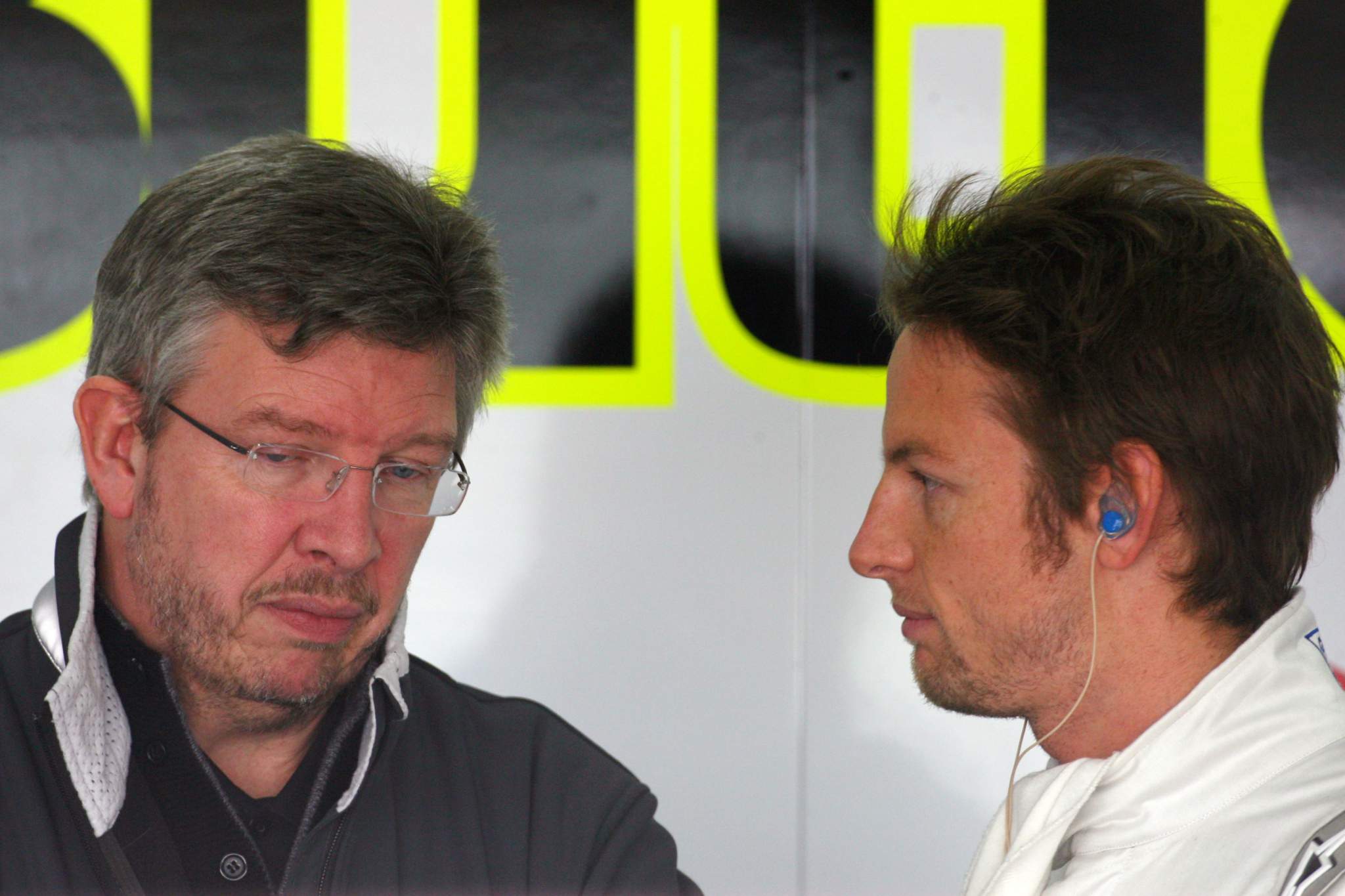
There’s another thin strand connecting the past and present as that refocused energy is similar to the biggest motivation for Honda’s F1 personnel in the 14 months or so that will cover the company’s announcement it will leave and its final grand prix in Abu Dhabi this year.
Honda’s commitment to an all-new 2021 engine – only after the October announcement it would leave F1 – meant the staff at Sakura had a huge job to take on to get it ready in time for the new season. But they knew it was the only opportunity to end the programme with a potential championship bid. Honda’s trackside staff now know they are part of a Red Bull title challenge and will be working to the very end.
Yet even this point of comparison has its limits. It’s true that the then-Honda staff knew that the 2009 car might be very good indeed, even if its ultimate fairytale potential was still to be discovered, because there was such an extended lead time as Honda had given up on 2008 mid-season.
But in this case, Honda’s withdrawal meant that car didn’t even have an engine. There was no guarantee of funding for testing, let alone the first race or the full season. And the threat of redundancies loomed large.
“Let’s not lose sight that the whole workforce didn’t know they had a job,” says Meadows.
“So, these guys were putting in the hours, hoping that we could create this car and generate some sponsorship to keep going.
“There were talks ongoing, and it felt positive. But it wasn’t a done deal.”

Brawn rectified the engine issue by striking a Mercedes deal, after a brief period in which various personnel expected talks with Ferrari to yield an arrangement with Brawn’s old team. But everything else was still entirely unknown.
“It wasn’t clear whether it was going to be Ross’s team run out of his own slush fund or whether it was going to be sold to somebody,” says Cole.
“But we just thought, well, if we haven’t got a car, we definitely haven’t got a saleable asset and it’s nobody’s team. They did a fantastic job of getting on and producing what turned out to be an absolutely fantastic car. And an absolute fairytale.”
So you’re sort of going around it and then thinking, well hang on a minute, this means that we’re nearly two seconds quicker than anyone else :: Andrew Shovlin
A fairytale that is, of course, extremely well-known. First, survival was ensured by Brawn and Nick Fry negotiating a management buyout, with Honda handing over the keys and putting in just short of £100m, matching what it would cost to shut down the whole operation.
On-track, the Brawn team’s first hint at what was coming was gleaned from a test it wasn’t even present for. In Portugal at the end of January, Toro Rosso ran its 2008 car and was almost two seconds quicker than any other team. But the work done back at Brackley told Shovlin and co that what should have been the 2009 Honda would have been about as quick as the 2008 car, having recaptured all the performance lost as a result of the 2009 rule changes.
“So you’re sort of going around it and then thinking, well hang on a minute, this means that we’re nearly two seconds quicker than anyone else,” says Shovlin.
“And then you think we must have got our sums wrong.”
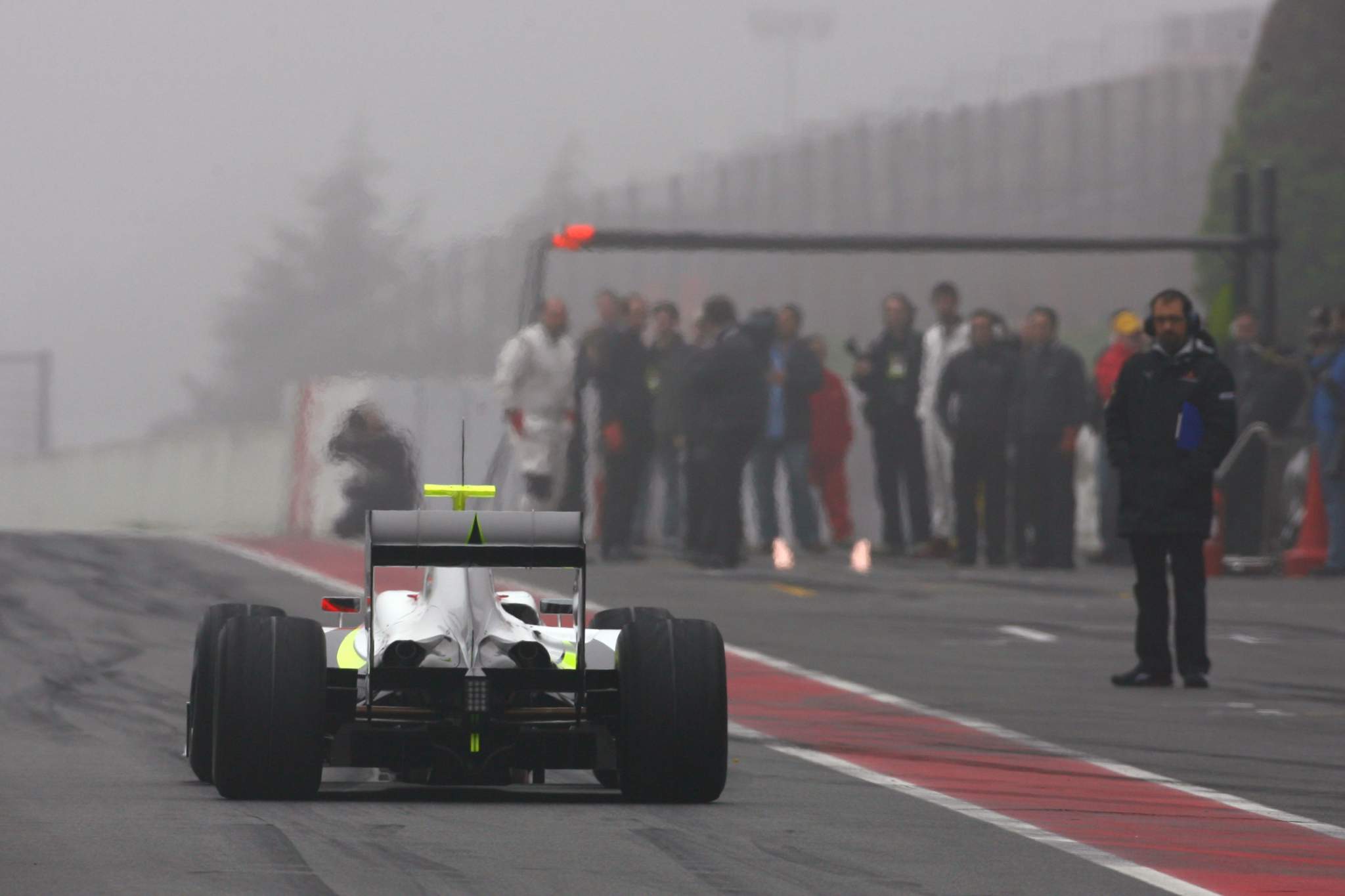
The basic appearance of the class of 2009, apparently resembling what Honda had moved on from several months prior, gave further cause for optimism.
But the real shock came at Barcelona testing where the Brawn was so quick that rivals initially thought it was cutting the chicane, then accused it of doing glory runs without fuel or ballast. It was so good that Jenson Button was initially much faster than anyone else despite using an old set of tyres that had done 50 or so laps at a shakedown on the Silverstone Stowe circuit.
There were various sacrifices and shortcuts being made as Brawn attempted to finish navigating the off-season, and even the first few months of the season itself
The story of the 2009 season itself is very well-known. But around 350 members of staff couldn’t be part of that experience because of the redundancies that had to be made.
“It was a very emotional time because we had to announce redundancy to the people who weren’t going to stay with the team and there was a fairly high percentage,” says Meadows.
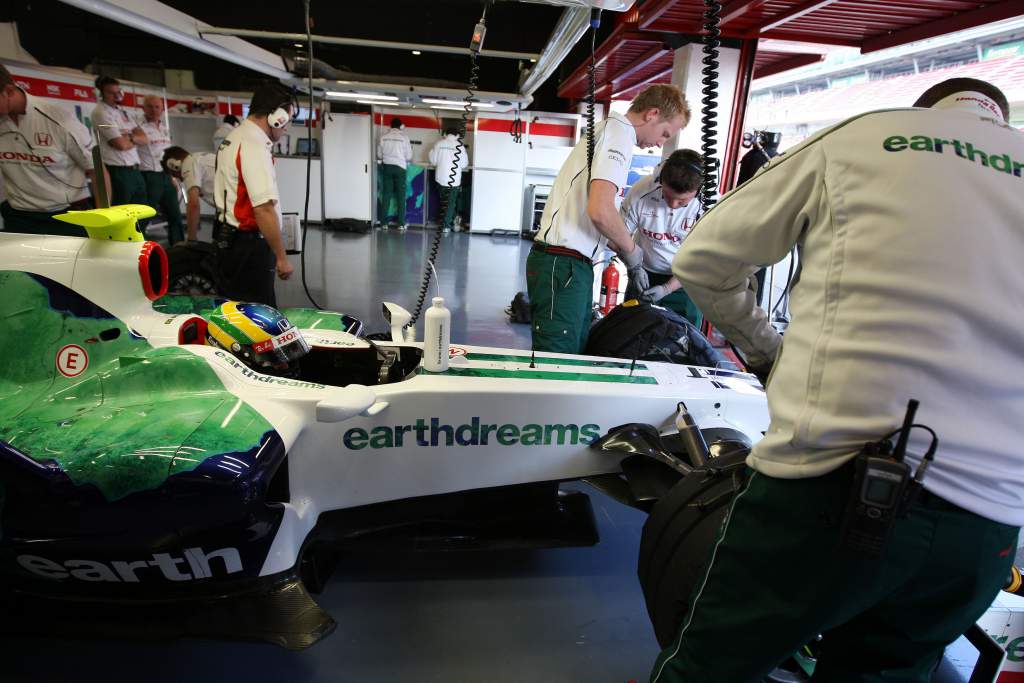
“The guys on the test team, who weren’t on the itinerary for Melbourne, knew their fate without even speaking to them.
“So, you had to go and speak to them before you could send the itinerary out the day before we actually went off to the test. It wasn’t well-scheduled, it was all last minute.”
There were various sacrifices and shortcuts being made as Brawn attempted to finish navigating the off-season, and even the first few months of the season itself.
It’s unlikely that Honda’s latest continuation project will enjoy the sort of dominant performance the double-diffuser Brawn had when it first hit the track 12 years ago, and it has been devoid of the same uncertainty behind-the-scenes
Development of the car was limited amid concerns over the budget required to complete the campaign, and the team did the first few races without a spare chassis – any big shunt prior to a third chassis being built for Monaco would have resulted in a missed weekend.
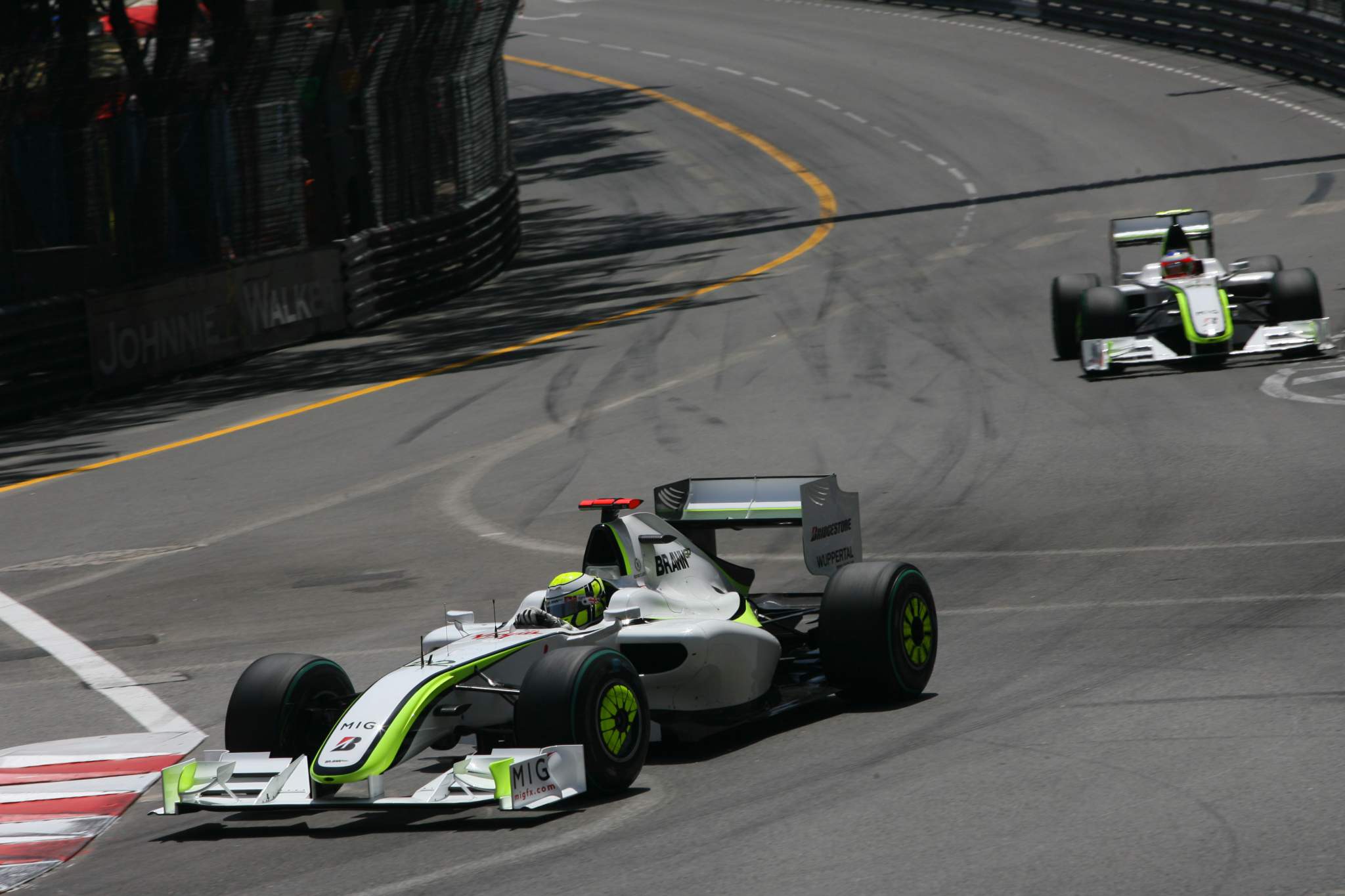
Yet against all odds, Brawn and Button triumphed. Emphatically in the beginning, creeping over the line in the end. Button’s early-season run of six wins from seven races was enough to withstand the combination of Brawn’s own performance trailing off as the year progressed, Red Bull’s challenge escalating, and the fallen giants of 2008, McLaren and Ferrari, finding form.
The road to the first race without Honda in 2022 will follow a very different path to the one that led to Australia in 2009
It’s unlikely that Honda’s latest continuation project will enjoy the sort of dominant performance the double-diffuser Brawn had when it first hit the track 12 years ago, and it has been devoid of the same uncertainty behind-the-scenes.
And the human element is what underlines why comparisons between Honda’s two exits are unfair.
“It was really all about the emotion,” says Shovlin about the Brawn one-two that kicked off its title-winning exploits.
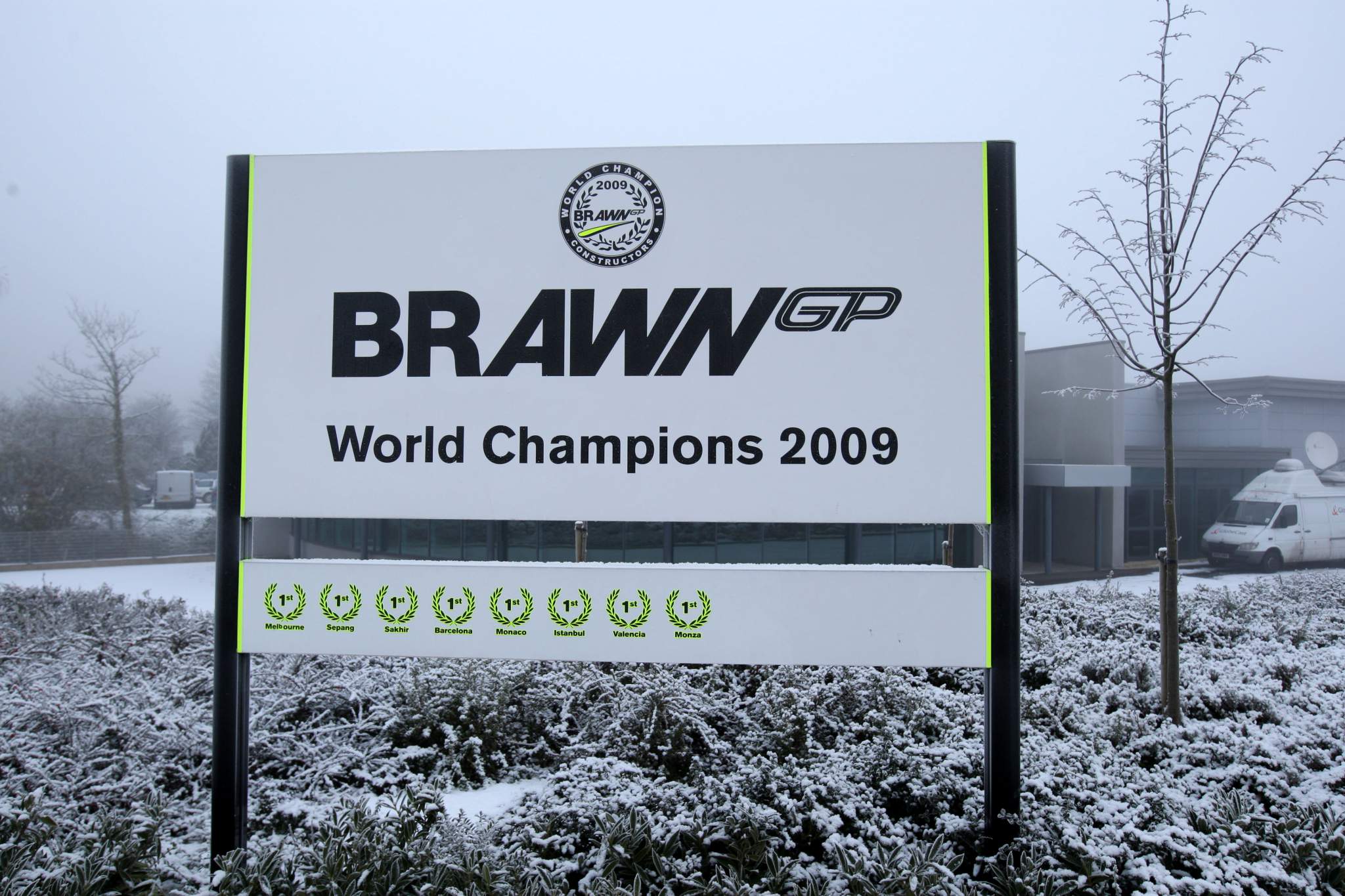
“When we went to Melbourne was the time when we announced the redundancies. Even at that point where we went away racing, you knew that lots and lots of people in back in Brackley were losing their jobs.
“But you’d come off this winter of not knowing whether you had a job, whether you were going to be able to pay the mortgage, and get dropped from that situation straight into this fairytale of the fastest car out there and winning race after race.”
Truthfully, the winter of 2008-09 was a world away from anything Honda’s teams are experiencing now.
The road to the first race without Honda in 2022 will follow a very different path to the one that led to Australia in 2009.


